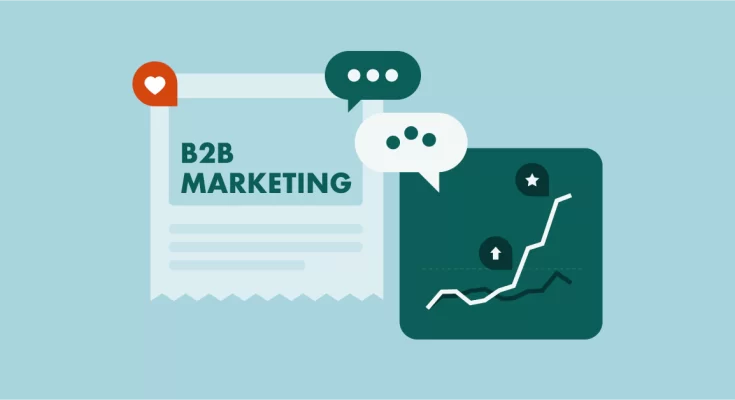The B2B digital payment ecosystem has expanded greatly in the past few years. With new technologies and payment methods popping up for business buyers and sellers, paying online has slowly become one of the most important and invaluable parts of e-commerce.
As we gradually leave the pandemic behind, and life returns to normal on all continents, we can’t help but notice that many B2B buyers have completely changed their buying patterns and are staying online – with no signs of returning. In fact, Gartner predicts in their latest report that 67% of customers shop differently due to Covid-19, with many of them having migrated totally online, and this number is only expected to continue growing.
If you are looking to optimize your online shop and do not know where to start, check out these 5tips on how you can improve your B2B checkout journey. Perhaps you will feel inspired to add new plugins to your store. Perhaps you will create new ways to facilitate payments for your buyers.Or perhaps you will take steps to smoothen your checkout UX with new technologies.
1. Include alternative payment solutions
One of the most major ways you can improve your B2B checkout experience is by increasing payment avenues by including alternative payment solutions. As more and more B2B buyers make their purchases online, their expectations increase. Instead of paying by credit card or invoice, they are now looking for more flexible ways to pay. To meet these expectations, B2B sellers must increase the number of ways their buyers can pay with alternative payment solutions.
One such alternative method is B2B Buy Now, Pay Later. While many people have heard of B2C Buy Now, Later, BNPL is still a relatively novel concept in the business buying world. However, it is a payment solution that can make a huge difference to business cash flows, and it should be seriously considered. While the buyer gets to choose flexible payment terms, the seller receives payment on time. Both parties thus can manage their cash on their own terms.
Many providers also have created simplified versions of the BNPL solution so that it can be installed as a plugin, compatible with popular online shopping platforms. This is a huge draw for sellers who want to cut back on onboarding and implementation time, while providing the best service for their buyers.
2. Provide transparent pricing
Many B2B buyers admit to abandoning their cart because of unforeseen costs on their order, including unexpected shipping costs or processing fees. Others emphasize that the key to a smooth checkout process is understanding upfront how much they will pay.
Business transactions are often more complex, and, depending on the business, they may involve several stakeholders, each with their own input. Order volumes also tend to be larger, especially in the manufacturing industry, which can rack up expensive shipping, especially when factoring in air freight.
When shipping costs are inevitable for your store, you should not delay revealing this information. Provide transparent, honest, and clear details on shipping pricing, processing fees, and other extra costs at the appropriate time. You can also do this earlier on in the purchase process, such as providing cost tablesat the bottom of product pages.
This can help your buyers save time in deciding if they want to make the purchase, and they will not be spooked at the checkout page and abandon their cart. In the short term, it can help you make the sale. In the longer term, you will find that your buyers have an increased sense of confidence in your brand.
3. Simplify the checkout process
The third way you can improve your checkout process is by simplifying it. Instead of having your buyers go through 7 steps, why not shorten it to 3? You should also make sure that you are only asking for vital information from your buyers, such as their delivery and billing addresses, their names, companies, and emails. Next, check that you are presenting your requests simply.Bigger fonts, single column forms, and the use of symbols and logos can often make filling in forms easier for your buyers.
If your buyers must sign up and confirm their email before they can check out, you could be missing out on lots of business from buyers who have no time to go through the motions. Why not implement guest checkout? You will still be able to capture their email address, which you can use to send confirmation of order and future marketing newsletters.
If you find yourself unable to simplify your checkout process, you should at least keep your buyers informed of where they are on their journey. For example, if you absolutely must have 7 steps in your checkout process, you can make an interactive chart on the page letting your users know which step they are on. This can create a clearer and more comfortable user experience, and people will be more likely to see their checkout journey to the end.
4. Multiple shipping options
To improve user experience, you may also consider multiple shipping options. This gives the seller more flexibility in pricing and timeframe, and they can prioritize their preferences when it comes to speed versus cost. An example is air freight shipping and sea freight shipping.
Having multiple shipping options may sound like a simple element, but it can really differentiate your B2B online shop from your competition. This is especially true if you plan on shipping internationally or shipping repeat orders, where air freight costs can very easily rack up.
5. Responsive customer support
Finally, one of the most important ways to improve your B2B checkout process is by providing excellent customer support if you do not already. Should anything go wrong or should your buyers have any questions, being responsive is a great way to keep them engaged and build trust with them.
If you operate a business with international buyers, you may also want to consider automated customer support such as chatbots. This is a great way to provide round-the-clock support.
You may also consider making your customer service channels more accessible by adding a live chat feature. Very often, businesses include an email function to allow customers to send in enquiries. However, email does not give the sense of immediacy that live chat does, and in today’s fast-paced digital world, this can seem lacking for customers.
Live chat is a great way for customers to stay on the product page while clearing up questions, which can increase their chances of seeing their order through. Remember that convenience is queen in today’s day and age, and a smooth customer experience can make a big difference in your checkout process.
The bottom line
With more and more B2B buyers migrating online, optimizing your checkout is more important than ever if you want to increase your sales and improve your overall customer satisfaction. The number of international transactions is also growing at a rapid rate. To keep up in this competitive landscape, it is vital to facilitate seamless international payments with no hidden costs, flexible payment options, and multiple shipping methods. You should also ensure that your checkout process is clean and easily understandable. By making it easy for your customers to check out, you may just be able to boost your conversion rate and exceed your KPIs this new year.




